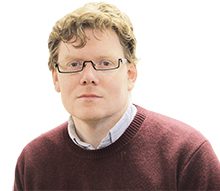In the aftermath of the 2017 general election, several of the signature policies of the 2010-15 coalition government have been thrust into the spotlight: public sector pay restraint, university tuition fees, and now the free-school programme.
Today, Nick Clegg—who must, presumably, be a different Nick Clegg from the deputy prime minister of that Coalition government—piled in on free schools, following a Times report that the Department for Education (DfE) was considering scaling back the programme.
Others have dealt with the practical and political implications this would have for the school system and for the Conservative Party, so here I wish to turn to Clegg’s historical revisionism. He claims free schools were predicated on “a very precise idea, which was to allow schools to be established primarily in areas where there was pressure on school places”.
This is straightforwardly wrong.
Free schools were based on a very precise idea, but it ran entirely contrary to accepting that free schools should be established only where demographic pressure required new institutions.
Policy Exchange, the think tank for which I work, did pioneering work on expansion of school choice in the system, from which the free school programme ultimately emerged. This work makes clear that from the beginning, the aim of the policy was to disrupt the monopoly of provision of new schools held by local authorities, by permitting existing academy chains and new providers to respond directly to the need for not simply more schools, but more effective schools.
Seeking innovative practice was not an afterthought, but a core aspect of the programme, and one that has yielded enormous dividends for not just those children attending the new free schools, but the whole system.
The work of Michaela Community School on behaviour management and teacher workload, or of West London Free School on knowledge-rich curricula and straightforward lesson planning, or of School21 on student’s oracy skills, or of the Boxing Academy on effective and transformative alternative provision: all this has ignited passionate debates within and about England’s schools, leading to reflection and reformation of stale and ineffective practices in schools many miles distant from those individual institutions.
None of this would have happened without the free-school programme.
Even those free schools making fewer national waves have made a major difference to their localities: a system shock to force neighbouring schools to ask why parents are choosing the newcomer over established provision, challenging them to improve their own offer.
On a purely technocratic front, this may mean “surplus” places in a local area – but a system that perfectly allocated a precise number of students to a selection of poorly-performing schools offering stagnant curricula and pedagogy is not a successful one.
Should those areas of the country where not a single child attends a secondary judged “good” or “outstanding” by the school inspectorate be told they have to have more children to get a decent school?
A definition of “need” for school places that is only demographic and does not consider quality of school places is deficient—and this was recognised as such from the beginning of the free-school programme.
Even where free schools have been unsuccessful, this has been identified and action taken to either transfer them to other effective providers or to close them down.
Compare this with the willingness of the local school system in the 1970s, 80s and 90s to tolerate for years the appalling failures of some community schools following comprehensive reorganisation.
Mr Clegg is denigrating a programme that was established by the government he was a member of and attacking it on grounds that ignore both the intention and the impact of that programme. Free schools are changing all our schools: they should be valued accordingly.

